Knee pain, a common complaint affecting people of all ages, can significantly impact daily life and mobility. From athletes pushing their physical limits to sedentary individuals experiencing discomfort, understanding the causes, symptoms, and appropriate actions for knee pain is paramount.
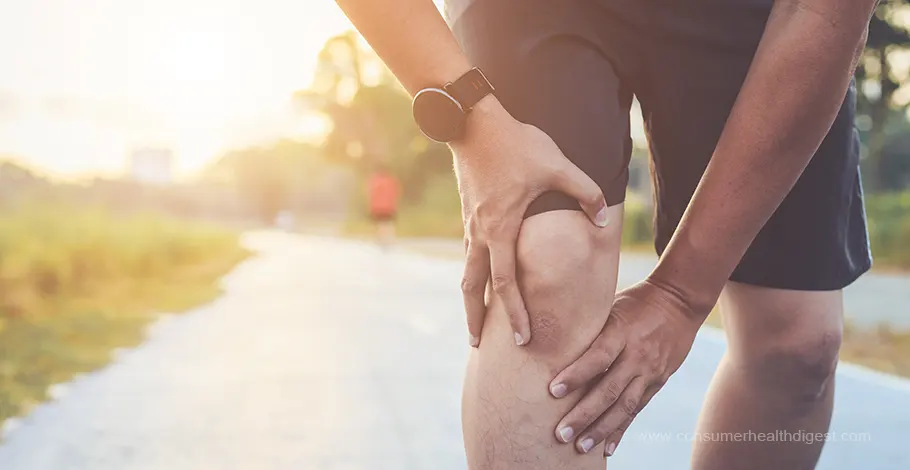
In this comprehensive guide, we delve into the intricacies of knee pain, exploring its prevalence, underlying causes, identifying symptoms, and knowing when it’s imperative to seek medical assistance. By shedding light on this often-overlooked discomfort, we aim to empower individuals to recognize, address, and manage knee pain effectively for improved quality of life and overall well-being.
Causes of Knee Pain
Knee pain can be a persistent nuisance, hindering our mobility and impacting our daily routines. Understanding the root causes of knee discomfort is crucial for effective management and treatment. Let’s delve into the diverse array of factors that can trigger knee pain:
Injuries (Acute)
- Sprain/Strain: Often resulting from sudden twisting or stretching of the knee ligaments or muscles, sprains and strains can lead to pain, swelling, and limited mobility.
- Ligament Tear (ACL, MCL, PCL, LCL): Injuries to the knee’s ligaments, such as the anterior cruciate ligament (ACL) or medial collateral ligament (MCL), are common, especially among athletes. These tears can occur during abrupt movements or traumatic impacts, causing instability and pain. [1]
- Meniscus Tear: The meniscus, a cartilage cushioning the knee joint, can tear due to sudden twisting or degenerative changes. This injury often causes pain, swelling, and restricted movement, particularly during activities involving bending or twisting of the knee.
- Patellar Tendonitis: Also known as jumper’s knee, patellar tendonitis involves inflammation of the tendon connecting the kneecap to the shinbone. Overuse or repetitive stress on the tendon, common in sports like basketball or volleyball, can lead to pain and tenderness. [2]
- Dislocation: A dislocated knee occurs when the bones of the knee joint are forcefully displaced from their normal position. This traumatic injury can result in severe pain, swelling, and instability, requiring immediate medical attention.
Overuse Injuries (Chronic)
- Tendinitis (Pes Anserine Bursitis, Iliotibial Band Syndrome): Tendinitis refers to inflammation of the tendons surrounding the knee joint. Pes anserine bursitis affects the bursa located near the inner side of the knee, while iliotibial band syndrome involves irritation of the iliotibial band along the outer thigh. These conditions often arise from repetitive movements or improper biomechanics, leading to persistent knee pain. [3]
- Bursitis: Bursitis occurs when the bursae, fluid-filled sacs cushioning the knee joint, become inflamed due to repetitive stress or trauma. This condition can cause localized pain, swelling, and tenderness around the affected area. [4]
- Osgood-Schlatter Disease: Common among adolescents, Osgood-Schlatter disease manifests as pain and swelling below the kneecap, where the patellar tendon attaches to the shinbone. Overuse or strain on the knee during growth spurts can exacerbate symptoms. [5]
Arthritis
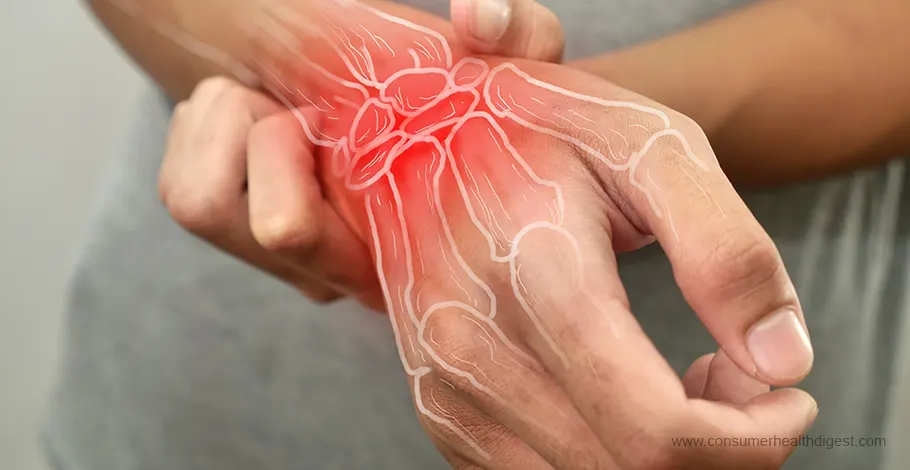
Arthritis Pain. Shutterstock Image
- Osteoarthritis: A degenerative joint disease, osteoarthritis occurs when the protective cartilage covering the ends of the bones wears down over time. This results in pain, stiffness, and reduced range of motion in the knee joint, particularly among older individuals or those with a history of joint injuries.
- Rheumatoid Arthritis: An autoimmune disorder, rheumatoid arthritis causes inflammation of the synovium, the lining of the joint capsule. This chronic condition can lead to joint pain, swelling, and deformity, affecting multiple joints including the knees.
- Gout: Gout is a form of arthritis characterized by the buildup of uric acid crystals in the joints, leading to sudden and severe episodes of pain, swelling, and redness in the affected knee.
- Pseudogout: Similar to gout, pseudogout involves the deposition of calcium pyrophosphate crystals in the joints, resulting in acute inflammation and pain, often mimicking other forms of arthritis. [6]
Other Causes
- Baker’s Cyst: Also known as a popliteal cyst, Baker’s cyst is a fluid-filled swelling that develops behind the knee. This condition can arise due to underlying knee joint problems, such as arthritis or meniscus tears, causing discomfort and stiffness. [7]
- Infection: In rare cases, knee pain may be attributed to an infection within the joint, leading to symptoms such as warmth, redness, swelling, and fever. Prompt medical intervention is essential to prevent complications.
- Bone Tumors: Although less common, bone tumors can develop within the knee joint or surrounding tissues, causing persistent pain, swelling, and bone deformities. Early detection and treatment are crucial for managing these potentially serious conditions.
Understanding the diverse range of factors contributing to knee pain is the first step towards effective management and treatment. If you’re experiencing persistent or severe knee discomfort, don’t hesitate to consult a healthcare professional for a thorough evaluation and personalized care plan. Prioritizing your knee health today can safeguard your mobility and overall well-being in the long run.
Symptoms of Knee Pain
Knee pain is a prevalent issue that can arise due to various underlying causes, ranging from injuries to medical conditions. Recognizing the symptoms associated with knee pain is crucial for proper diagnosis and timely treatment. Here’s a breakdown of the common symptoms individuals may experience:
Pain (Location, Intensity, Duration):
Pain is often the primary symptom of knee issues and can manifest in different ways. The location of the pain can vary, depending on the underlying cause. It might be felt in the front, back, inside, or outside of the knee joint. The intensity of the pain can range from mild discomfort to severe, debilitating pain. Additionally, the duration of pain can be acute, lasting for a short period, or chronic, persisting over an extended period.
Swelling:
Swelling around the knee joint is a typical symptom of various knee problems. It occurs due to the accumulation of fluid in the tissues, indicating inflammation or injury. Swelling may make the knee appear larger than usual and can be accompanied by warmth and tenderness.
Stiffness:
Stiffness in the knee joint is often experienced, especially after prolonged periods of inactivity or following activities that stress the knee. Individuals may find it challenging to bend or straighten their knee fully, and this stiffness can contribute to decreased mobility and range of motion.
Redness and Warmth:
Inflammation within the knee joint can lead to redness and warmth around the affected area. These symptoms typically accompany swelling and pain, indicating an immune response to injury or underlying medical conditions such as arthritis.
Instability/Buckling:
Feeling of instability or buckling in the knee joint is common among individuals with knee problems. This sensation may occur suddenly, causing the knee to give way, and can significantly impact one’s ability to walk, stand, or engage in physical activities safely.
Clicking or Grinding Sounds:
Clicking, popping, or grinding sensations within the knee joint often indicate issues with the cartilage or other structures. These sounds, known as crepitus, can occur during movement and may be accompanied by pain or discomfort.
Difficulty Bending or Straightening the Knee:
Difficulty bending or straightening the knee, also known as limited range of motion, is a hallmark symptom of various knee conditions. It may result from inflammation, muscle weakness, or structural abnormalities within the joint.
Weakness:
Weakness in the knee muscles is another common symptom associated with knee pain. It can contribute to instability, reduced mobility, and difficulty performing everyday activities such as climbing stairs or standing up from a seated position.
Ignoring persistent knee pain can lead to further complications and may exacerbate existing issues, ultimately affecting one’s quality of life.
When to Seek Medical Help for Knee Pain?
Knowing when to seek medical help for knee pain is crucial for avoiding long-term damage and ensuring a speedy recovery. If you experience severe injury signs like the inability to bear weight or visible knee deformity, immediate attention is necessary.
Persistent discomfort after a few days, despite following the RICE principle, warrants a professional evaluation. Look out for escalating pain, swelling, or any signs of fever alongside knee pain, as they could indicate serious conditions needing urgent care.
Symptoms such as knee locking, noticeable deformity, or sensations of pain, numbness, or tingling in the lower leg signal the need for medical attention to prevent complications and address underlying issues effectively.
Preventive measures to effectively manage knee pain

Will Regular Walking Reduce Knee Pain? Shutterstock Image
To prevent knee pain, consider the following self-care tips and preventive measures:
RICE Principle: Rest, ice, compression, and elevation (RICE) can help manage knee pain. Avoid activities that exacerbate pain and ensure proper rest. Applying ice, compression, and elevation can reduce inflammation and discomfort. [8]
Maintain Healthy Weight: Obesity is a significant factor in knee pain development. Shedding excess weight can alleviate strain on the knees, reducing the risk of pain and injury.
Regular Exercise: Engage in exercises that strengthen the muscles around the knees, such as leg lifts and squats. Warm up before exercising to prevent muscle strain and cool down afterward to ease tension.
Low-Impact Activities: Opt for low-impact exercises like cycling or swimming to reduce strain on the knees. When running, choose smooth surfaces and properly fitted shoes to minimize impact and stress on the joints.
Avoid Prolonged Standing: Minimize standing for extended periods, especially on hard surfaces. Use soft, cushioned surfaces when standing to reduce pressure on the knees.
Implementing these preventive measures can contribute to maintaining knee health and reducing the risk of developing knee pain.
Conclusion
In conclusion, knee pain is a multifaceted issue with various causes, symptoms, and implications for individuals’ daily lives and overall well-being. From acute injuries to chronic conditions such as arthritis and tendonitis, understanding the underlying factors and recognizing the signs of knee pain is crucial for effective management and treatment.
Medical intervention is essential in cases of severe injury, persistent pain, or when symptoms like swelling, fever, or joint deformity arise, to prevent further complications. Additionally, adopting preventive measures such as practicing the RICE principle, maintaining a healthy weight, engaging in regular, low-impact exercise, and avoiding prolonged standing can significantly contribute to knee health. Prioritizing these approaches ensures individuals can manage knee pain effectively, safeguarding their mobility and quality of life.
7 Sources
We review published medical research in respected scientific journals to arrive at our conclusions about a product or health topic. This ensures the highest standard of scientific accuracy.
[2] Malliaras, Peter, et al. "Patellar Tendinopathy: Clinical Diagnosis, Load Management, and Advice for Challenging Case Presentations." J. Orthop. Sports Phys. Ther., 31 Oct. 2015, www.jospt.org/doi/10.2519/jospt.2015.5987.
[3] Loiacono C, Palermi S, Massa B, Belviso I, Romano V, Gregorio AD, Sirico F, Sacco AM. Tendinopathy: Pathophysiology, Therapeutic Options, and Role of Nutraceutics. A Narrative Literature Review. Medicina (Kaunas). 2019 Aug 7;55(8):447. doi: 10.3390/medicina55080447. PMID: 31394838; PMCID: PMC6723894.
[4] Williams, Christopher H., et al. "StatPearls [Internet]." Bursitis. StatPearls Publishing, 24 July 2023, www.ncbi.nlm.nih.gov/books/NBK513340.
[5] Corbi F, Matas S, Álvarez-Herms J, Sitko S, Baiget E, Reverter-Masia J, López-Laval I. Osgood-Schlatter Disease: Appearance, Diagnosis and Treatment: A Narrative Review. Healthcare (Basel). 2022 May 30;10(6):1011. doi: 10.3390/healthcare10061011. PMID: 35742062; PMCID: PMC9222654.
[6] Macmullan P, McCarthy G. Treatment and management of pseudogout: insights for the clinician. Ther Adv Musculoskelet Dis. 2012 Apr;4(2):121-31. doi: 10.1177/1759720X11432559. PMID: 22870500; PMCID: PMC3383522.
[7] "Baker cyst - Symptoms and causes - Mayo Clinic." Mayo Clinic, 27 Sept. 2022, www.mayoclinic.org/diseases-conditions/bakers-cyst/symptoms-causes/syc-20369950.



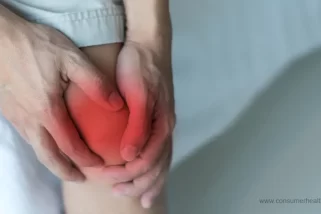
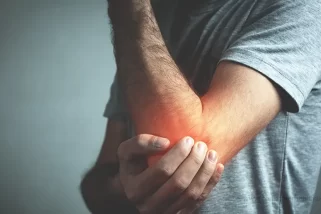
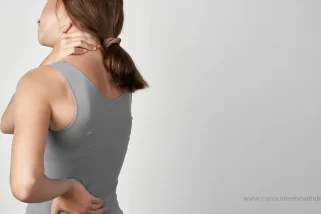
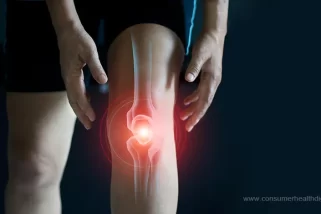

 This article changed my life!
This article changed my life! This article was informative.
This article was informative. I have a medical question.
I have a medical question.
 This article contains incorrect information.
This article contains incorrect information. This article doesn’t have the information I’m looking for.
This article doesn’t have the information I’m looking for.
